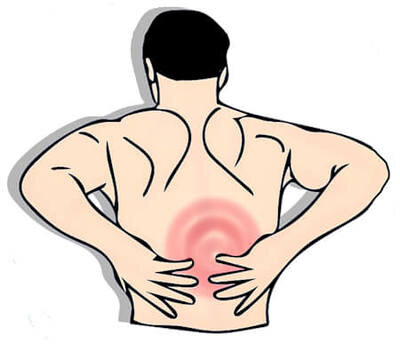What’s at the core?
If you’re not on close terms with your psoas, it’s time to get familiar. This muscle pronounced “so-as” is a key player in your core and comprises the group of muscles called hip flexors. As the only muscle group that connects your spine to your legs, the psoas has a big effect on mobility and posture as well as affect back or knee pain
Psoas imbalances can contribute to back and hip pain because the muscles in these areas get overused to compensate. Imbalances are usually caused by short and tight or weak and overstretched psoas muscles. Activities that compress your hips, such as sitting, excessive running or walking, and excessive sit ups, can shorten your psoas and even lead to weakness. If your psoas muscles are short and tight, you may benefit from stretching and lengthening exercises. If the muscles are weak and overstretched, they may require strengthening movements. Here are a few ways to begin addressing imbalances that affect back or knee pain.
Try the constructive rest position
This neutral position can help release tension in your psoas. Lay on your back with your knees bent and heels on the floor and set your feet hip-width apart at a comfortable distance from your buttocks. Don’t force your back to the floor, but simply rest your hands on your belly and let gravity do the work. Try this rest position for 10 minutes a day.
Support your seat
Sitting for long periods of time can compress and shorten the psoas. To decrease this effect, take regular breaks to get up and move around, and practice good posture. If you’re going on a road trip, consider sitting with a rolled-up towel under your sitting bones, which can release pressure on the psoas.
Get a massage
Here’s permission to treat yourself. Because of where the psoas is located, it can be difficult to stimulate, and a certified massage therapist will know how to access it. Regular massages can help with circulation and may improve function.
Consult a physical therapist
If you’re experiencing pain in the lower back, hips, or knees, imbalanced psoas may be to blame. Our physical therapists at The Human Performance and Wellness Center can recommend appropriate stretching or strengthening exercises depending on what’s right for your body.
Regular Exercise
As always getting a regular workout and staying active will always help with your mobility. Our Hybrid Fitness Center will offer you the ability to be a gym member in a place where you have access to Physical Therapists.
Call us to find out more about how you can become a member of our fitness family.
Cramming exercise into a single weekend isn’t ideal.
Consider these tips for staying safe.
A “weekend warrior” is someone who, due to the hectic nature of a typical workweek, opts to cram most of her or his exercise into weekend workouts, activities, games and/or competitions. Little River physical therapist David Haught will never fault anyone for exercising, but he added that weekend warriors need to be be particularly cautious as the sporadic nature of their workout schedule will put them at a greater risk of getting injured.
“Days of downtime followed by sudden bursts of activity over a day or two isn’t ideal,” said Haught, owner of The Human Performance & Wellness Center & The Fitness Zone in Little River. “By putting greater stress on the body over a shorter period of time, weekend warriors should be aware that they’re putting themselves at greater risk of acute injuries, such as strains, sprains or worse.”
“That’s because inactivity throughout the week can lead to a general deconditioning of the body that may include muscle tightness and imbalances, along with reduced endurance and cardiovascular fitness. A more consistent workout schedule can combat such deconditioning”, Haught says.
But if one truly does struggle to find time to achieve their expert-recommended 150 minutes of exercise each week without cramming them into just a couple of days, Haught offers the following tips for avoiding injury.
Space It Out – Rather than packing your weekly exercise minutes into two back-to-back days at the end of the week, consider spacing these days out. This can help you avoid some of the deconditioning effects mentioned above.
Warm Up, Cool Down – When the weekend arrives and it comes time to take the field, hit the trails or tee off for 18, always warm up first. Take 5 to 10 minutes for some light resistance and cardio exercises to get the blood flowing. And after you finish, cool down with some stretching. Also, be sure to drink plenty of water throughout.
Temper Your Intensity – When you’re packing your workouts into just a couple days a week, don’t overdo it. As you’re not exercising as consistently, stay on the safe side by pulling back slightly on your intensity.
Mix It Up – Try not to fill your weekends with the same activities. Mix it up, perhaps focusing on cardio one weekend and strength another –or a variation thereof. This helps ensure yourentire body remains balanced, reducing yourchances of injury.
Stay Active During the Week – Even if you can’t hit the gym during the week, don’t use that as an excuse to be sedentary. Capitalize on brief moments during the week to move around, stretch, and maybe even do some exercising. Take the stairs, stretch during your breaks, stand at your desk, walk during meetings or after work, and maybe even fit 10 minutes of at-home resistance training into your evenings.
Listen to Your Body – Always know your limits. And, if you feel aches and pains or suspect possible injury, stop exercising immediately and see a medical professional, such as a physical therapist. Don’t try to power through discomfort just so you can get through the weekend.




Recent Comments